How Often Do You Water A Dish Garden
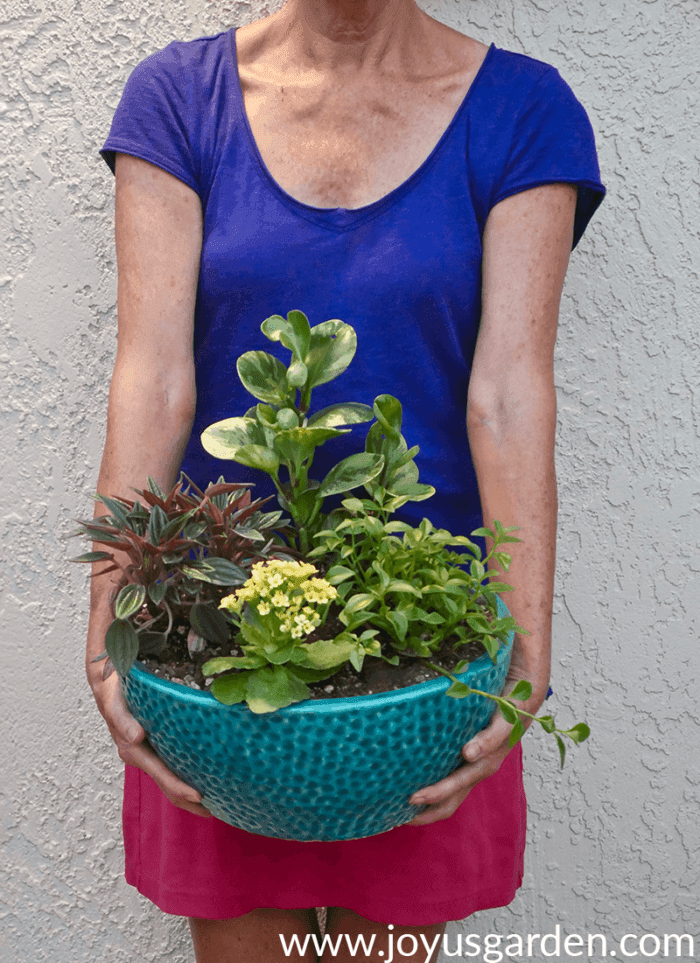
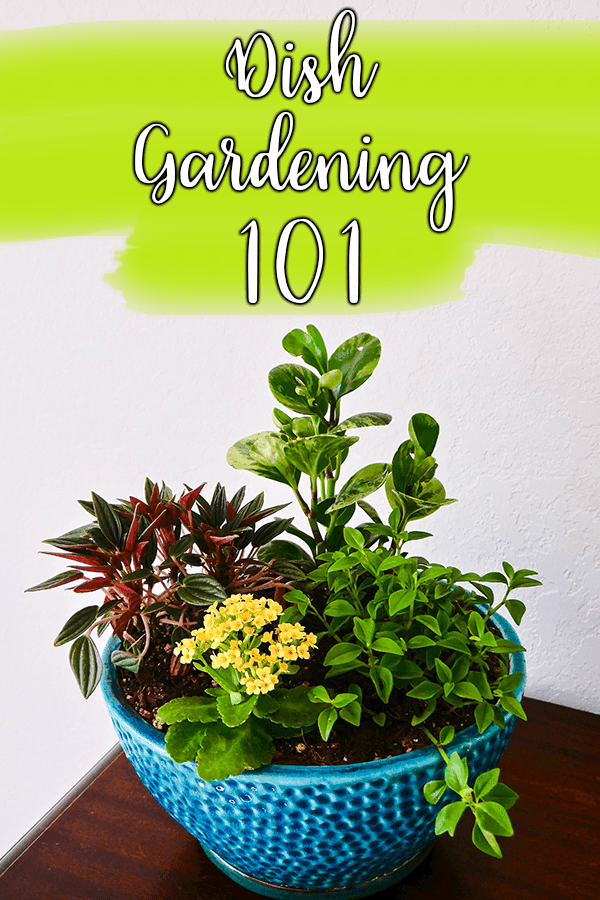
Have you ever made a dish garden? In case you have no clue as to what a dish garden is or even looks like, think of it as a mini landscape in a shallow container. It usually grows in your home instead of outdoors. I hadn't made 1 in a couple of years and was inspired by a few peperomias which I had recently picked up. This is all about dish gardening 101 – what you need to know about planting as well as maintenance.
2 Ways to Make a Dish Garden
I show you how these 2 ways in the video below. With 1 the plants stay in their grow pots. The dish garden you see in the lead photo has the plants directly planted in soil. This is how I like to make them and the majority of dish gardens are made this way. The 1 in the turquoise ceramic is going in my dining room with the long haul in mind.
A few reasons to leave the plants in grow pots: it weighs less, there's no soil required, the individual plants can easily be changed out, the container you're using has no drain hole, & if you want to take the plants out to individually plant them. This is also easier if you're doing a temporary planting.
My trusty ole work table holds 2 dish gardens already made along with the ceramic bowl waiting to be planted.
Some Of Our General Houseplant Guides For Your Reference:
- Guide To Watering Indoor Plants
- Beginner's Guide To Repotting Plants
- 3 Ways To Successfully Fertilize Indoor Plants
- How to Clean Houseplants
- Winter Houseplant Care Guide
- Plant Humidity: How I Increase Humidity For Houseplants
- Buying Houseplants: 14 Tips For Indoor Gardening Newbies
- 11 Pet-Friendly Houseplants
Permanent vs Temporary
A temporary planting would be 1 you do for an event, give as a gift or for a holiday such as Christmas, Thanksgiving or Easter. You can choose any combo of plants because this is short lived.
A permanent planting is 1 that's made for the long haul so you should carefully choose plants which will grow together well. 1 of dish gardens is a combo of Peperomias & the other is a cactus garden.
Design / Style
You can choose a design or style if you'd like. Popular choices are desert, fairy, old fashioned, Japanese, tropical, sleek & modern, & festive holiday.
They can be made for any occasion, even as wedding centerpieces.
Container Choices
This, along with the plant choices & adornments, is where you can get creative. Dish garden containers are typically shallow & the most popular choices are baskets, ceramics & terra cotta. Resin (or plastic), metal & glass are oftentimes used too.
Flea markets, garage sales & your attic are good places to find a container out of the ordinary. I used my dad's childhood dump truck, which you see below, for an example of a fun dish garden a boy could make.
Some containers may not have drain holes. Dish gardens need to have some kind of drainage so be sure to follow the instructions here using pebbles & charcoal.
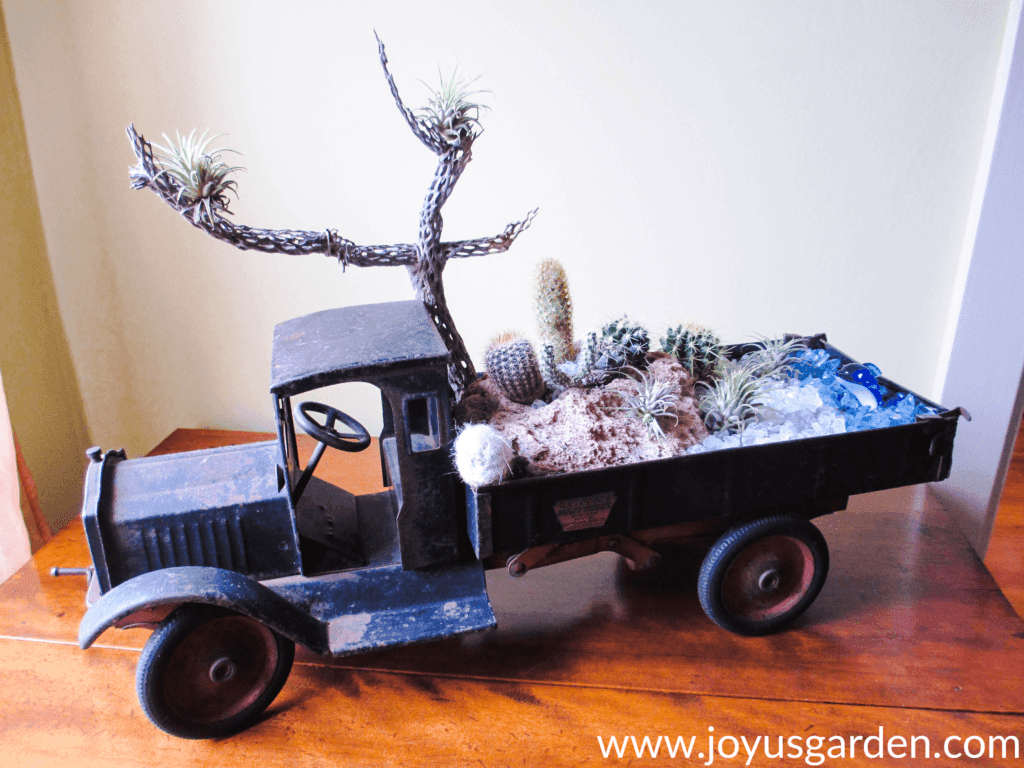
My dad's old dump truck made a fun dish garden container. The cacti were planted in the pumice stone planter.
Plant Choices
I like to use plants which vary in height, texture, shape & sometimes color. That being said, I love a cactus or fleshy succulent dish garden entirely made with all low plants. Anything which is pleasing to your eye is key.
Head's up: you want to make sure that the plants you're combining all have like requirements in terms of watering & exposure. For instance, I wouldn't combine cacti (high light, low water) with pothos & peace lilies (lower light, more water).
Give the plants some room to grow. I popped in the yellow kalanchoe not only for color but to fill in the space in the front until the peperomias grow.
If the garden you're making is a temporary planting, then combine whatever you'd like!
2, 3, & 4″ plants are used for smaller dish gardens. 6″ combined with 4″ is usually the size we'd use in larger containers.
Plant Choices
Blooming Plants
Bromeliads, kalanchoes, cyclamen, mini roses, African violets, begonias, Easter Cactus, mums, Christmas Cactus, and poinsettias are all good choices & relatively easy to find.
Trailing Plants
Pothos, arrowhead philodendron, heartleaf philodendron, hoya, grape ivy, English ivy, creeping fig.
Upright Plants
Aglaonema, dieffenbachia, neanthebella palm, spathiphyllum, peperomia, snake plant, jade plant, button fern, bird's nest fern, succulents.
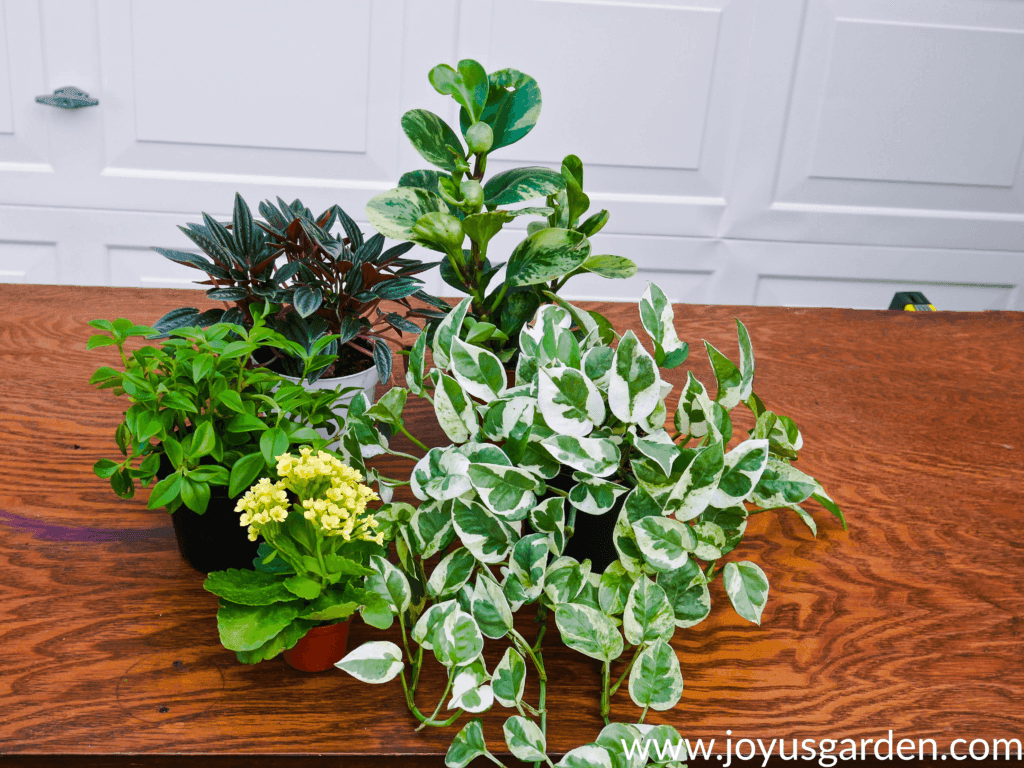
The plants I used included: pothos en joy, variegated baby rubber plant, peperomia "rosso", perperomia "amigo marcello" & a yellow kalanchoe.
Materials Used
For my Peperomia bowl:
3 – 4″ Peperomias
1 – 2″ Kalanchoe
14″ wide x 7″ high ceramic bowl
1/2 potting soil & 1/2 succulent & cactus mix. I use a locally produced s & c mix. Fox Farm Smart Naturals potting soil has lots of good stuff in it.
Charcoal. This is optional but what it does is improve the drainage & absorb impurities & odors. For this reason, it's great to use when doing any indoor potting project.
A few handfuls of local compost. (this & the worm compost are optional
A light top dressing of worm compost. This is my favorite amendment, which I use sparingly because it's rich. Here's why I like it so much.
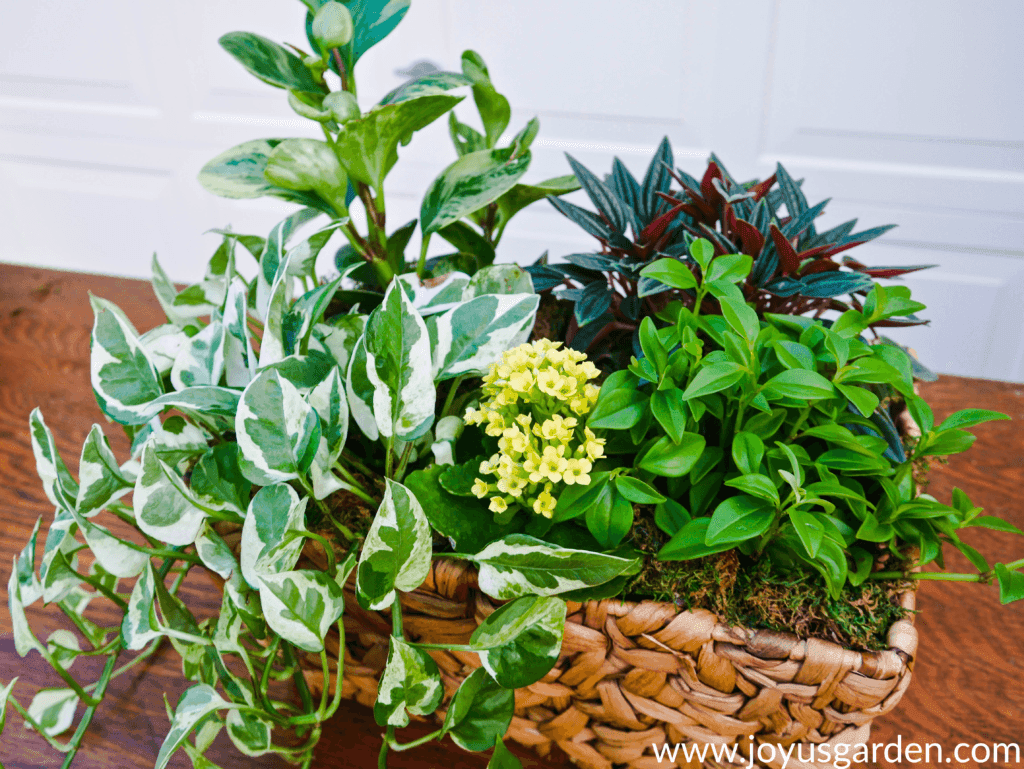
A close up so you can see the moss covering the grow pots on this basket dish garden.
Dish Gardening 101: The Simple Steps
It's best to watch the step by steps in the video. You'll find them for the garden planted in soil starting at the 9:18 mark. The garden made with the plants in their grow pots in a basket lined with plastic is before that.
Adornments / Topdressing
If you want to jazz your dish garden up a bit, the sky's the limit. I've used glass chips, crystals, rock, & shells as well as driftwood. Fairy garden devotees use a wide variety of miniature accessories so you can really go crazy as far as that's concerned.
Some people like to top dress their dish gardens with moss. Moss comes in a variety of types as well as colors. I used moss for the basket dish garden because it hides the grow pots.
Use your imagination & your dish garden will become a living work of art!
Dish gardening 101: how to create & care for these mini landscapes
How to Maintain your Beautiful Dish Garden
Do this before the garden is made: make sure your dish garden plants are watered a couple of days before the planting to avoid any stress. Right after the planting you want to water the plants again.
Watering
I like to water each individual plant root ball rather than the whole garden itself. This seems to prevent it from staying too wet. A watering can with a long, thin neck is great for this. You'll see the 1 I use in the video.
It's still warm here in Tucson so I'm watering this peperomia dish garden every 2 weeks. In the winter, I'll back off to every 3-4 weeks.
Light
This will vary depending on what type of plants you're using. My cactus dish garden grows outside in full sun here in Tucson whereas my peperomia garden is in medium light here in my dining room. It's about 10′ away from a bay window & receives lovely natural light pretty much all day long.
Fertilizing
Be careful not to fertilize your dish garden too often. They're planted in shallow containers & salts & other minerals can build up. They need little if any fertilizing especially if you've used a high-quality potting soil. If you feel yours needs it, once in the spring should do it.
Liquid kelp or fish emulsion would work fine as well as a balanced liquid houseplant fertilizer (5-5-5 or lower) if you have that. Dilute any of these to half strength & apply in spring.
You don't want to fertilize houseplants in late fall or winter because that's their time for rest. Avoid fertilizing a houseplant which is stressed, ie. bone dry or soaking wet.
I give my dish gardens, as well as all my houseplants, a light application of worm compost with a light layer of compost over that every spring. Easy does it – a 1/4″ layer of each is plenty. Read about my worm compost and compost feeding right here.
Additional Maintenance
In general, dish gardens are low maintenance. You may have to prune off an occasionally spent leaf or replace a plant that's not doing well or if it gets too big. Keep your eyes open for pests (be sure to check your plants before planting to make sure they have none) – some dish garden plantings are prone to spider mites.
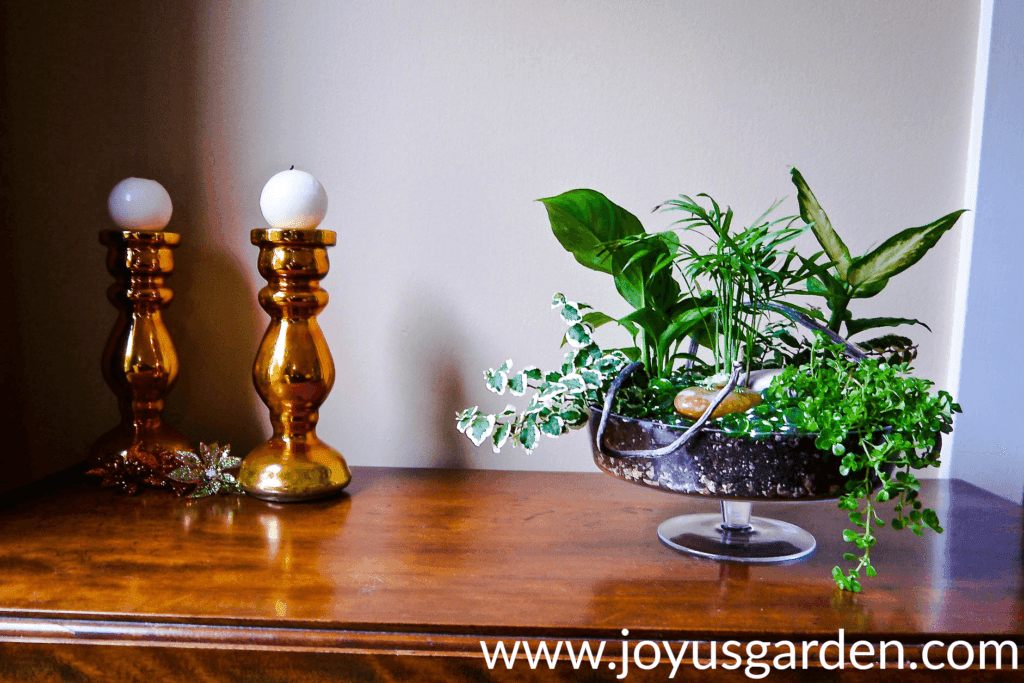
A dish garden I made about 7 years ago in a low glass footed bowl. I've done a post & video about it so check out the plants used & the making of this 1 if you'd like.
Dish Gardening Tips
Dish gardens will grow. You'll have to change out & replace some of the plants as they get too big &/or too crowded.
It's good to position your plants slightly above the soil line as they'll eventually sink down a bit.
Are your plants planted closely together? Have you used topdressings such as moss, glass chips or rock? Be sure to water them less often if this is the case. These all slow down the soil from drying out.
If your potting soil is on the heavy side & needs more aeration, consider adding perlite or pumice. This ups the ante on the drainage factor. Or, 1/2 potting soil & 1/2 succulent & cactus mix will work. You want it to be on the lighter side & well drained. If you're using all fleshy succulents or all cactus, then use a straight succulent & cactus mix.
Don't water your dish garden too often – they can easily rot out.
Happy (Dish) Gardening,

YOU MIGHT ALSO LIKE:
- Roses We Love For Container Gardening
- Succulent And Cactus Soil Mix For Pots
- Planting Aloe Vera In Containers
- The Best Tips For Growing Your Own Balcony Garden
This post may contain Amazon affiliate links. You can read our policies here. Your cost for the products will be no higher but Joy Us garden receives a small commission. Thank you for helping us spread the word & make the world a more beautiful place!
How Often Do You Water A Dish Garden
Source: https://www.joyusgarden.com/dish-gardening-101/
Posted by: mannimeting.blogspot.com

0 Response to "How Often Do You Water A Dish Garden"
Post a Comment